Close UP
Multicultural Club Nishigaoka 3-chome Residents' Association ~With the assistance of university students, we aim to create a community that coexists in cooperation with foreign residents.~
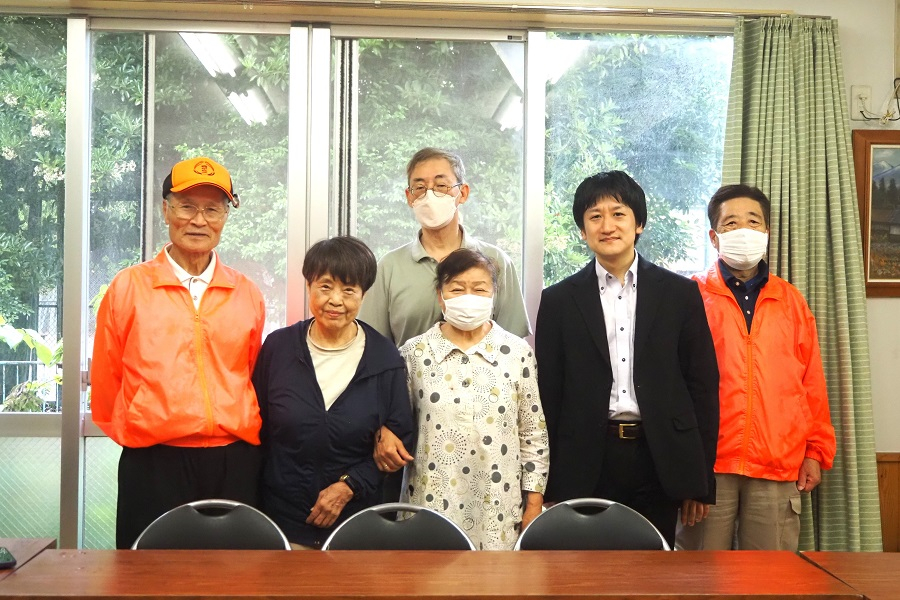
The Tokyo Metropolitan government housing Nishigaoka 3-chome Apartment Complex, located on the border of Itabashi City, is in Kita City. The number of foreign households, which accounts for more than 10% of the 450 households in the apartment complex, is increasing year by year. The Nishigaoka 3-chome Residents' Association, to which residents of the housing complex belong, is promoting multicultural coexistence in collaboration with a University.
We spoke with Ms. Chiyo Sasaki, chairperson of the Nishigaoka 3-chome Residents' Association, its board members, and Mr. Kazuki Murakami, associate professor in the faculty of Sociology at Toyo University, about their activities.
Starting a Japanese Language Salon to Live Together with Foreign Residents
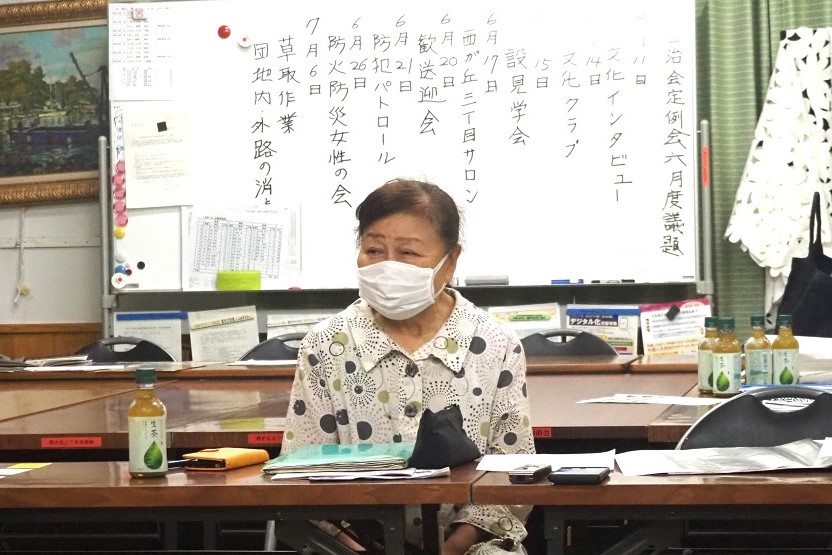
Upcoming events are listed on the board in the meeting room.
The number of foreign residents in the Nishigaoka 3-chome Apartment Complex has been increasing every year since around 2014. As a result, various problems have gradually begun to arise regarding the rules of the apartment complex, such as how to dispose of waste. The Nishigaoka 3-chome Residents' Association explored its role as a residents' association and, with funding from Kita City since 2019, began operating a Japanese language salon in cooperation with a NPO.
Ms. Sasaki, who has been the chairperson of the residents' association since that time, describes the situation back then as follows. "Most of the problems were caused by language and cultural differences. Troubles were arising because (foreign residents) did not know the rules and (their) customs were different. The Japanese residents of the apartment complex are aging, but conversely, the foreign residents are mostly young people, such as families with children. Since we live in the same place, I thought it would be best to avoid friction as much as possible and work together. So, we started a Japanese language salon in the hope of being able to communicate with foreign residents in Japanese, even at a basic level."
The Kita City subsidy program for the NPO ended after three years. Then, starting in 2022, the Faculty of Sociology at Toyo University took over and launched the Multicultural Club project.
Holding a Multicultural Club Once a Month as a Place for Social Interaction
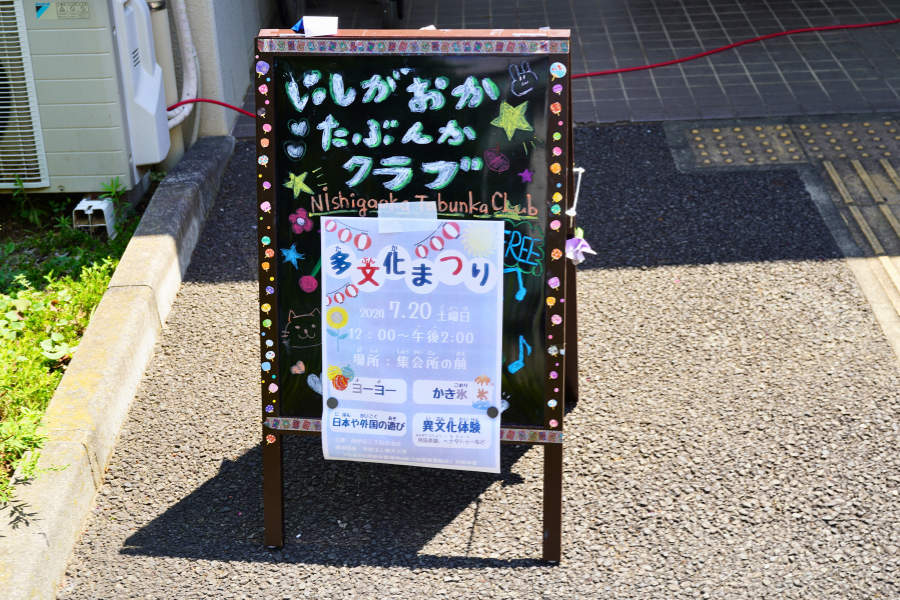
The Multicultural Club is held once a month. The residents' association surveyed foreign residents and decided to hold the club on Saturday mornings, when it is easier for people to attend. Five or six students from Toyo University and about 15 residents of the apartment complex gather in the meeting room. Most of the participants from the apartments are children with foreign roots. Association members and Toyo University students interact with the children by chatting with them and helping them with their homework. Additionally, they sometimes offer support to adults with problems.
"People who have just moved in may have questions about how to fill out paperwork for the local government. When we receive inquiries about enrolling in nursery schools or work-related concerns, we sometimes research the necessary contact information and pass it on to them," says Ms. Sasaki. By holding regular Multicultural Club meetings once a month, foreign residents have gradually become more aware of the existence of the residents' association and The Multicultural Club, and it has become easier to communicate with them.
The residents' association informs people about the Multicultural Club by circulating and posting flyers. Additionally, Ms. Sasaki herself called residents on the morning of the event to encourage their participation. Due to active publicity efforts, many children participate in the activities every time.
Some residents even brought origami paper and bean bags (otedama) for the Multicultural Club. "I think an environment where you can hear children's voices is peaceful and wonderful. It is important to create a place for children where they can belong," says Ms. Sasaki.
Students play a "buffer" role between the residents' association's board members and the residents' children.

Photo Courtesy: Multicultural Club Nishigaoka 3-chome Residents' Association
A distinctive feature of the Multicultural Club is that, in addition to residents of the apartment complex, university students are also involved. This activity is not only a community involvement activity, but also part of a course at Toyo University's Department of Global and Diversity Studies, in the Faculty of Sociology. The aim of the course is for students to engage in activities related to "multicultural coexistence" in the local community, and to identify issues on their own through those activities.
Mr. Murakami, who is in charge of the program, explains the significance of this activity as follows. "When learning about multicultural coexistence, it is important to not only study in the classroom, but also to experience the reality of the local community. I believe that the activities in Nishigaoka 3-chome are also very meaningful for students in terms of their involvement with the local community and its residents. When you get involved in the community as a third party, many things become apparent. We feel that there are other advantages to participating in activities in the area where one lives."
Ms. Sasaki, the chairperson of the residents' association, also feels a great sense of accomplishment about the participation of university students in the Multicultural Club. "There is a significant age gap between the children living in the apartments and us; the board members. Having university students between us and the children acts as a nice buffer. I think those children also join the Multicultural Club largely because they want to play with students."
Cultural Exchange Party Initiated by Nepalese Residents to Cook and Eat Dishes From Various Countries Together
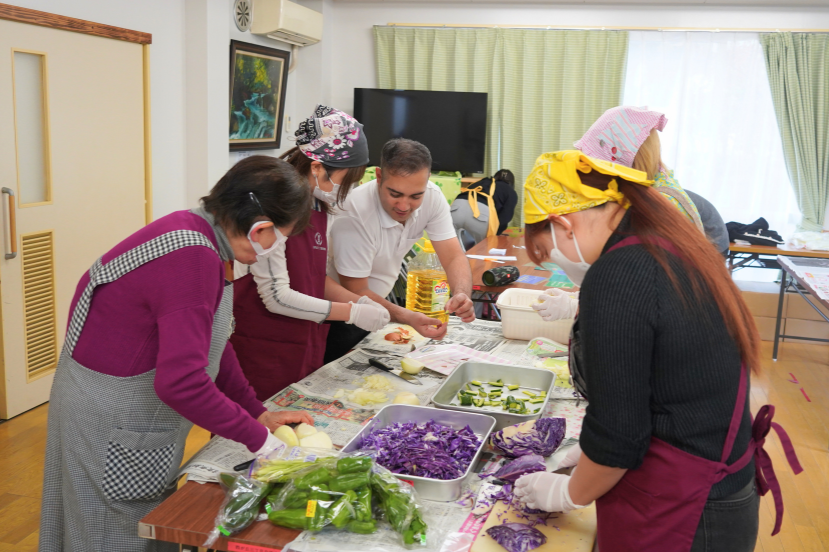
Photo Courtesy: Multicultural Club Nishigaoka 3-chome Residents' Association
In addition to the regular Multicultural Club, the residents' association also holds various events such as festivals and cultural exchange gatherings together with university students. The Multicultural Festival held last July was an event aimed at encouraging people of all ages to participate. In addition to Japanese-style attractions such as yo-yo fishing and shaved ice, the residents' association also offered henna tattoos - a type of body painting - with the cooperation of Nepalese residents.
Then, in December 2024, they held a cultural exchange party where participants cooked and ate dishes from various countries together; an activity started in 2023. Participants made dishes from various countries with the help of participants from Nepal, Mongolia, and Myanmar. The participants enjoyed a meal together, chatting as they sampled dishes and ingredients that were unfamiliar to most of them.
Mr. Hirakazu Minomo, vice-chairman of the residents' association, says he would like foreign residents to take on some kind of role in the apartment complex. "If we just told people who came to our event to come back next time, they might feel pressured. Even if it's something as small as just telling them, 'We'd like to ask you to do this next time,' it might make them feel more involved and less passive."
Cultural exchange gatherings began when Nepalese residents said they wanted to throw a party. It started as an event where participants collaborate and interact through cooking. The members of the residents' association believe that it is important for foreign residents not just to be participants, but also to work together as members of the community.
Living in the Community, Being Relied Upon, and Communicating with Others
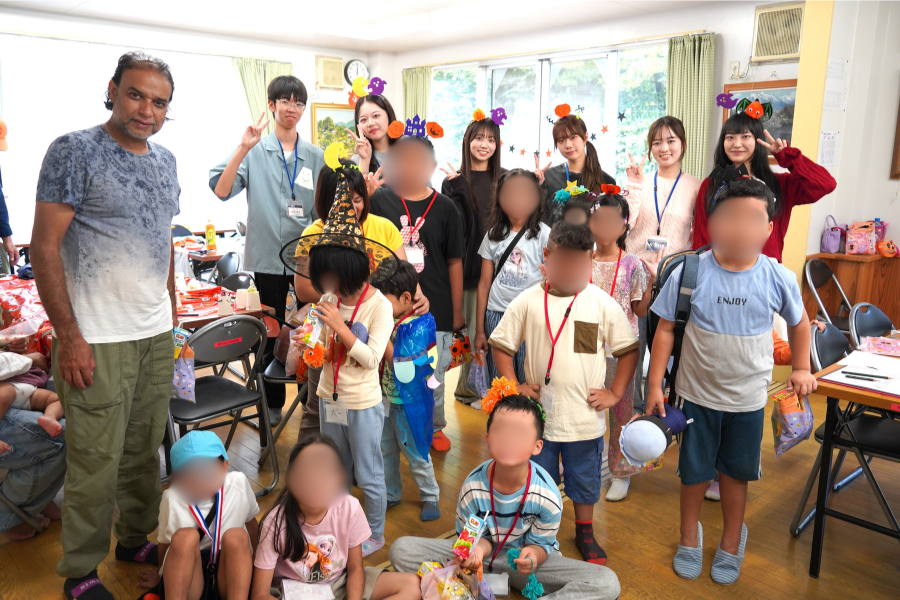
Photo Courtesy: Multicultural Club Nishigaoka 3-chome Residents' Association
Ms. Sasaki says that the biggest change she has noticed since the start of the Multicultural Club initiative is that she is now able to talk with all the residents.
"When we first approached foreign residents, they seemed confused about what to do. However, I made an effort to greet and talk to them whenever we met, and eventually, greeting each other became a customary practice among the residents. Currently, when I greet someone, they always greet me back. I believe that daily communication begins and ends with greetings." As Ms. Sasaki said, the residents' association members make a point of actively greeting children whenever they see them, not only at events such as the Multicultural Club but also in the hallways and elevators of the apartment complex.
The Nishigaoka 3-chome Residents' Association and Toyo University plan to continue working together in the future. However, the participating students change every year. "We must not discontinue the initiatives that the community has started just because of the university's reasons. I want to create a system that allows students to be involved continuously for two years or more," says Mr. Murakami. At Toyo University, it seems that they will continue to seek ways that are beneficial to both the university and the residents' association, so that students can become more deeply involved in community activities.
Ms. Sasaki says that the most important goal for the Multicultural Club going forward is to continue its activities. "We do not have any member with foreign roots on the residents' association board, yet. Being relied upon as a member of the community and being able to talk openly with others in a trusted manner is also very meaningful for residents who have moved here from other countries. I hope that someone (from among the foreign residents) will come forward to serve as a board member in the future."
The community activities in Nishigaoka 3-chome will continue, in order to make the living environment more enjoyable and comfortable for all residents.

*This article is based on information available at the time of the interview. For the latest information, please contact the organization directly.
